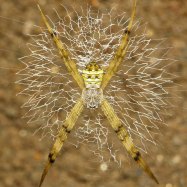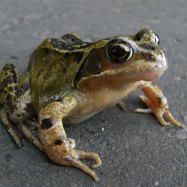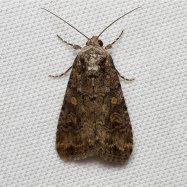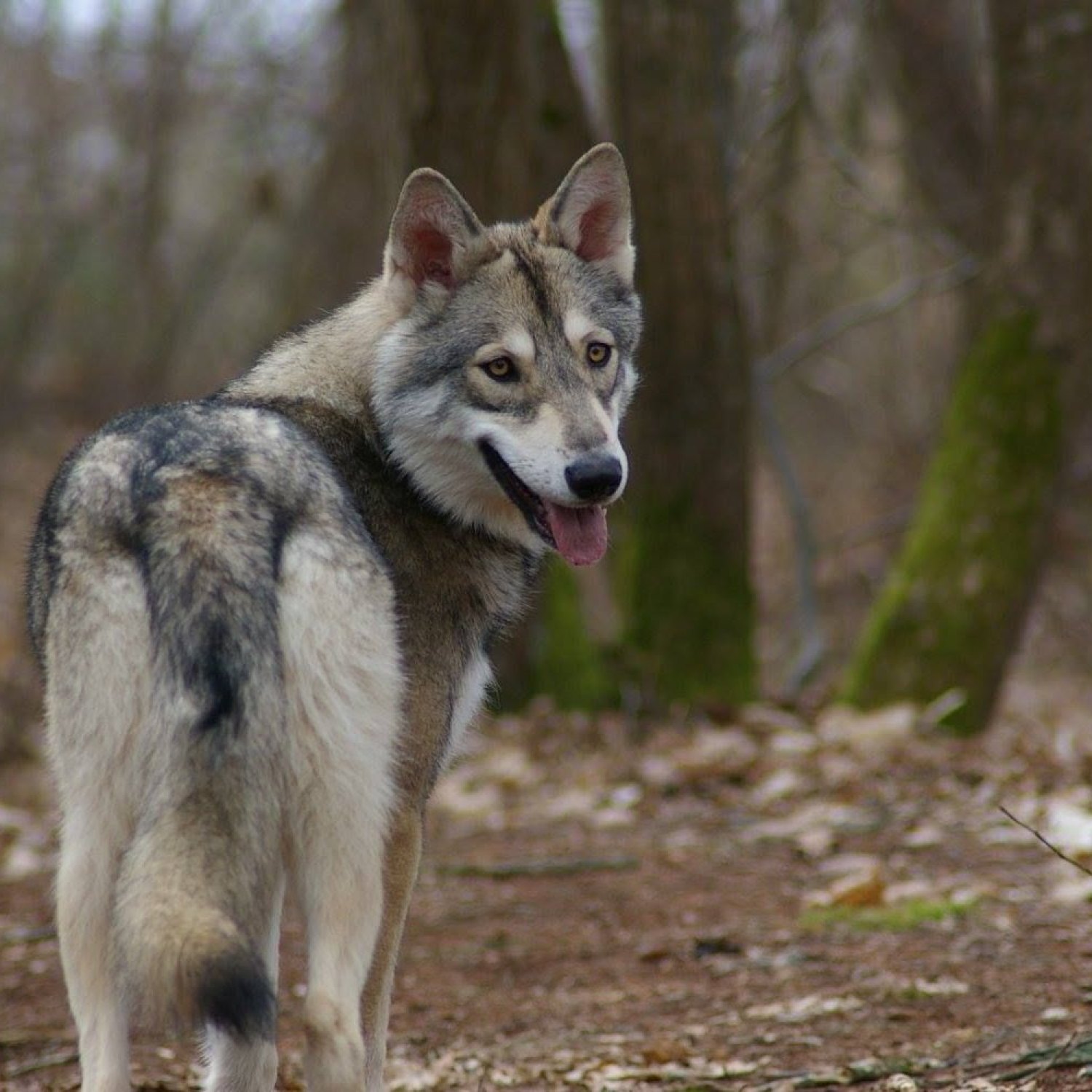
Saarloos Wolfdog
24-28 inches
The Saarloos Wolfdog is a majestic and powerful dog breed, with a length of 24-28 inches and a medium to large body shape. Originating from domesticated wolves, it belongs to the Canidae family and makes a loyal companion. With its stunning appearance and impressive stature, it's no wonder why this breed is gaining popularity among dog lovers. #SaarloosWolfdog #canidae #dogbreed
Animal Details Summary:
Common Name: Saarloos Wolfdog
Kingdom: Animalia
Habitat: Forests and grasslands
The Saarloos Wolfdog: A Hybrid of Nature and Domestication
In the animal kingdom, there are many interesting and unique species that capture our attention and spark curiosity. One such creature is the Saarloos Wolfdog. With its striking appearance and intriguing background, this dog has earned its place in the hearts and minds of many animal lovers.The Saarloos Wolfdog, scientifically known as Canis lupus f Saarloos Wolfdog. familiaris, is a magnificent hybrid of wolf and dog. Commonly referred to as a "wolfdog," this fascinating animal is the result of a crossbreeding between a German Shepherd and a Eurasian Gray Wolf. The breed was created in the early 20th century by Dutch breeder Leendert Saarloos, from whom it gets its name. In his quest to create a canine that possessed the wild characteristics of a wolf but the loyal and trainable nature of a dog, Saarloos succeeded in developing a unique and captivating breed.
The Saarloos Wolfdog, as its name suggests, is native to the Netherlands. It is classified under the Animalia kingdom, Chordata phylum, Mammalia class, and Carnivora order. This magnificent creature belongs to the Canidae family, which includes well-known species such as wolves, coyotes, and domesticated dogs. The Saarloos Wolfdog is one of the few hybrid breeds that have been officially recognized by the Fédération Cynologique Internationale (FCI), a global organization responsible for overseeing dog breeds worldwide.
A Hybrid with a Unique Appearance and Habitat
The Saarloos Wolfdog, like most hybrid breeds, is a blend of its two parent species, resulting in a truly unique appearance Sambar. Its coat comes in various colors, including shades of gray, cream, and white. Its fur is thick and dense, providing protection against harsh winters. The ears of this breed are wide and triangular, giving it an alert and attentive look. An interesting feature of the Saarloos Wolfdog is its long and bushy tail, which is a characteristic inherited from its wolf lineage. Its eyes come in different shades of amber, giving them an intense and captivating gaze.In their natural habitat, Saarloos Wolfdogs prefer living in forests and grasslands. Their wild instincts are evident in their tendency to roam and explore, making them ideal for living in open and spacious areas. However, with proper training and socialization, these dogs can adapt to living in domesticated spaces as well. Since they are a hybrid breed, they possess a combination of the best qualities from both their wolf and dog ancestors, making them suitable for various living environments.
A Carnivorous Diet and Geographic Distribution
As a canine breed, the Saarloos Wolfdog follows a carnivorous diet, just like its wild cousins. This means that their primary food source is meat, which includes raw or cooked meat, bones, and organs. In the wild, they would hunt and consume prey like deer, elk, and wild boar. However, as domesticated dogs, their diet consists of high-quality dog food, supplemented with raw meat and bones.The Saarloos Wolfdog is native to the Netherlands, specifically the northern region, where it was first bred. Its popularity has since spread, and this breed can now be found in many parts of Europe and North America. These dogs thrive in temperate climates, with an ideal temperature range of 20-25 degrees Celsius. Herd formation is a common trait among wolves, and the Saarloos Wolfdog is no exception. They prefer living in packs and are highly territorial, making them excellent guard dogs.
A Medium to Large-Sized Athletic Canine Companion
The Saarloos Wolfdog is a medium to large-sized breed, with males typically standing at 24-28 inches and weighing between 75-90 pounds. Females are slightly smaller, averaging 22-26 inches and 50-75 pounds. These dogs have a physique that is well-muscled, athletic, and agile, making them excellent working dogs. Due to their wild genetics, they possess impressive strength and stamina, making them well-suited for physically demanding tasks.Being a hybrid breed, the Saarloos Wolfdog is not suitable for first-time dog owners or individuals looking for a low maintenance pet. They require experienced handling and consistent training from an early age to ensure their wild instincts are properly managed. However, with the right guidance and training, these dogs can make loyal, loving, and devoted companions.
A Fascinating and Controversial Breed
Despite their captivating appearance and unique characteristics, the Saarloos Wolfdog has had its share of controversies. Due to their wolf ancestry, some people are skeptical about their domestication and suitability as pets. However, responsible breeders have worked tirelessly to develop this breed into well-behaved, trainable, and sociable animals.An interesting fact about the Saarloos Wolfdog is that it is one of the few dog breeds that have been used for a specific purpose. In the 1970s, this breed was used as an experimental guide dog for the blind. However, due to their independent nature and high energy levels, they were deemed unsuitable for this role. This led to the suspension of their use as guide dogs, but it also showcased the versatility of this breed and its potential to excel in various tasks.
A Hybrid of Wild and Domestic, a Unique Canine Companion
In conclusion, the Saarloos Wolfdog is an extraordinary breed that combines the best qualities of its wolf and dog ancestors. This canine has captured the hearts and minds of many, with its unique appearance, wild instincts, and impressive capabilities. With proper care and training, they make excellent companions for experienced dog owners who are looking for a devoted and loyal four-legged friend. So, if you are fascinated by the wild side of the canine world and are willing to put in the time and effort, the Saarloos Wolfdog may just be the perfect addition to your family.

Saarloos Wolfdog
Animal Details Saarloos Wolfdog - Scientific Name: Canis lupus f. familiaris
- Category: Animals S
- Scientific Name: Canis lupus f. familiaris
- Common Name: Saarloos Wolfdog
- Kingdom: Animalia
- Phylum: Chordata
- Class: Mammalia
- Order: Carnivora
- Family: Canidae
- Habitat: Forests and grasslands
- Feeding Method: Carnivorous
- Geographical Distribution: Netherlands
- Country of Origin: Netherlands
- Location: Domesticated
- Animal Coloration: Various, including shades of gray, cream, and white
- Body Shape: Medium to large
- Length: 24-28 inches
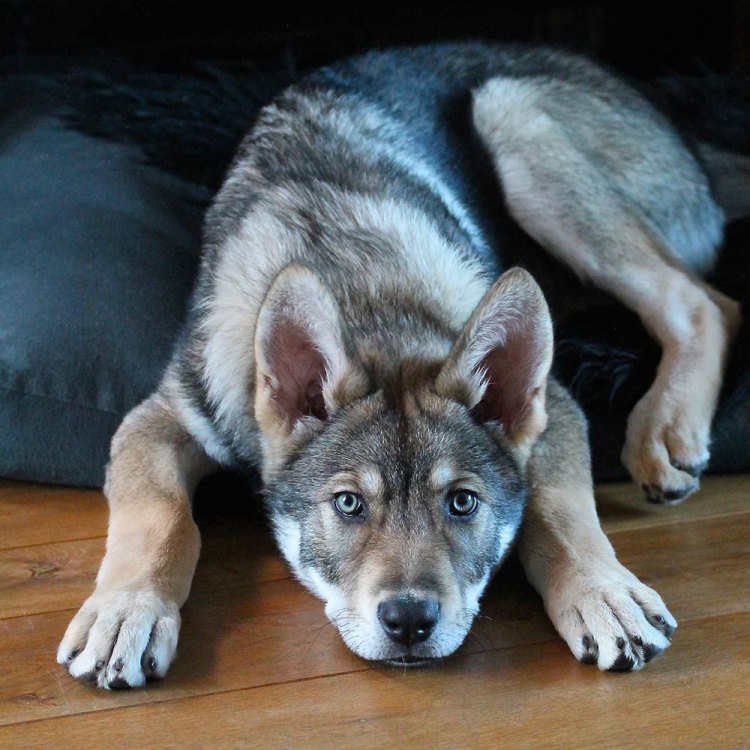
Saarloos Wolfdog
- Adult Size: 24-28 inches at the shoulder, weighing 70-110 pounds
- Average Lifespan: 10-14 years
- Reproduction: Sexual
- Reproductive Behavior: Mating season from January to March
- Sound or Call: Barking, howling
- Migration Pattern: Non-migratory
- Social Groups: Pack
- Behavior: Intelligent, loyal, and independent
- Threats: None, as they are domesticated
- Conservation Status: Not applicable
- Impact on Ecosystem: Not applicable
- Human Use: Companion animal
- Distinctive Features: Wolf-like appearance, strong build
- Interesting Facts: Bred by Leendert Saarloos in the 20th century by crossing various dog breeds with wolves
- Predator: No predators in domesticated settings
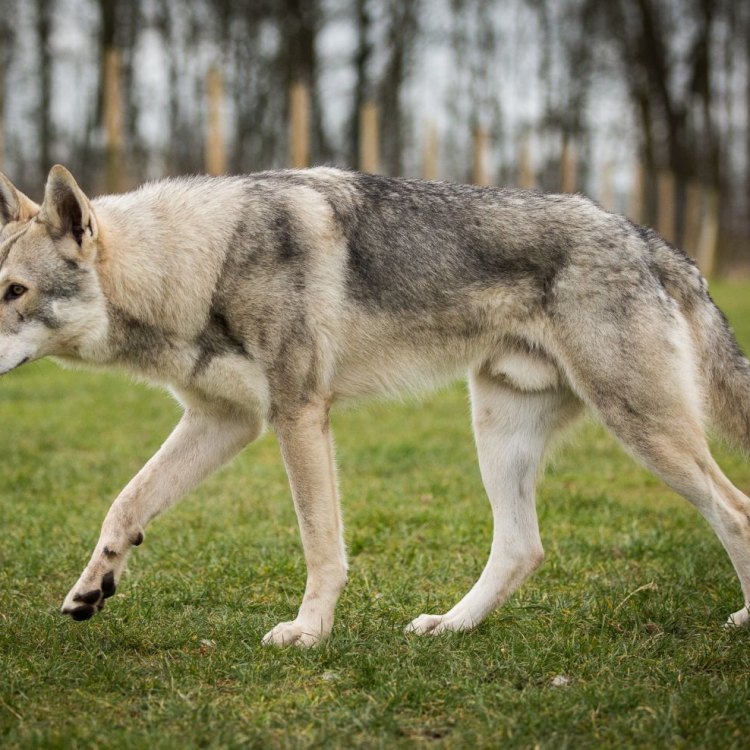
Canis lupus f. familiaris
Discovering the Fascinating Saarloos Wolfdog: A Companion Born from Combining Canines and Wolves
In a world where most dog breeds can be traced back to their wild ancestors, the Saarloos Wolfdog stands out as a unique and mesmerizing companion. This breed is relatively unknown to the general public, but once you lay eyes on one, you will be captivated by its striking appearance and impressive demeanor.The Saarloos Wolfdog is a cross between a domestic dog and a wolf, born out of a desire to replicate the intelligence and loyalty of wolves while still being suitable as a companion animal. And in this endeavor, Leendert Saarloos, a Dutch breeder, succeeded in the 20th century PeaceOfAnimals.Com.
Now, let's delve deeper into the world of the Saarloos Wolfdog and discover what makes this breed truly one-of-a-kind.
The Basics: Size, Lifespan, and Reproduction
The Saarloos Wolfdog is not a small breed, standing at 24-28 inches at the shoulder and weighing between 70-110 pounds. This makes them a large breed, comparable to other wolf-like dogs, such as the Siberian Husky and German Shepherd.In terms of lifespan, the average for a Saarloos Wolfdog is 10-14 years, which is similar to other large dog breeds. This longevity can be attributed to their relatively healthy genetic makeup and proper care from their owners.
Like most dogs, the Saarloos Wolfdog reproduces sexually, with breeding typically occurring during the mating season from January to March. During this period, females will come into heat and will only mate with one male. This behavior is similar to that of wolves, who also have a specific mating season.
Sounds and Communication
The Saarloos Wolfdog is known to be a vocal breed, with its primary forms of communication being through barking and howling Song Thrush. Barking is a form of communication used in various situations, such as alerting their owners of danger or communicating with other dogs. On the other hand, howling is a form of long-distance communication, typically used to locate and connect with other pack members.This breed also has a unique vocalization called "whining" used in situations of submission or begging. All these vocalizations stem from their wolf ancestry, where communication through sounds is crucial for survival.
Behavior and Social Structure
The Saarloos Wolfdog's behavior is best described as intelligent, loyal, and independent. With a mix of domestic dog and wolf traits, it comes as no surprise that they are highly intelligent animals, capable of learning and problem-solving. This intelligence, combined with their independent nature, can be challenging for novice dog owners to handle, but with proper training and socialization, they make excellent companions.In the wild, wolves live in packs, and the Saarloos Wolfdog exhibits similar social behavior. They thrive in a pack environment, where a clear hierarchy is established, with an alpha leading the group. This hierarchy is also evident in their interactions with humans, with Saarloos Wolfdogs showing immense loyalty and respect to their owners.
Threats and Conservation Status
Unlike their wild cousins, the Saarloos Wolfdog is not a threatened species. As they are purely domesticated and have no wild populations, their conservation status is not applicable. However, they do face potential health concerns, such as hip and elbow dysplasia, common in large breeds.In terms of threats, Saarloos Wolfdogs have no natural predators in domesticated settings. However, it is essential to ensure that they are adequately trained and socialized, as their wolf ancestry can make them prone to aggression towards other dogs and small animals if not properly managed.
The Impact on Ecosystem and Human Use
Given that the Saarloos Wolfdog is a domesticated breed and does not exist in the wild, it has no impact on the ecosystem. However, their use as companion animals has had a significant impact on their human companions. With their loyal and intelligent nature, Saarloos Wolfdogs make excellent pets for active and experienced owners.But, it is important to note that owning a Saarloos Wolfdog requires a great deal of responsibility, as they have a strong prey drive and are not suitable for small apartments or novice owners. These intelligent creatures need physical and mental stimulation, along with proper training and socialization to thrive.
The Distinctive Features and Interesting Facts
As the name suggests, the Saarloos Wolfdog has a wolf-like appearance, with its strong, muscular build and shaggy coat. They have a thick double coat, with a waterproof undercoat and longer guard hairs, giving them protection against harsh weather conditions. This coat comes in various colors, ranging from light to dark shades of gray, with some rare individuals having a white coat.One of the most fascinating facts about the Saarloos Wolfdog is its origin story. Leendert Saarloos, a Dutch breeder, crossed various dog breeds with wolves, with the goal of creating a breed with the intelligence and loyalty of wolves. This led to the creation of the Saarloos Wolfdog, which is now recognized as a separate breed by the Fédération Cynologique Internationale (FCI).
The Predator: A Furry and Fierce Protector
In conclusion, the Saarloos Wolfdog is a magnificent and unique breed, bred for its intelligence, loyalty, and striking appearance. While their wolf ancestry may make them a challenge to handle for some, with proper care and training, they make for excellent companions.These creatures embody the perfect blend of wild and domestic, making them a perfect companion for those who seek a loyal and intelligent furry friend. The Saarloos Wolfdog is not only a product of crossbreeding, but also reflects the deep connection and bond between humans and wolves, a bond that continues to evolve and thrive in the modern world.
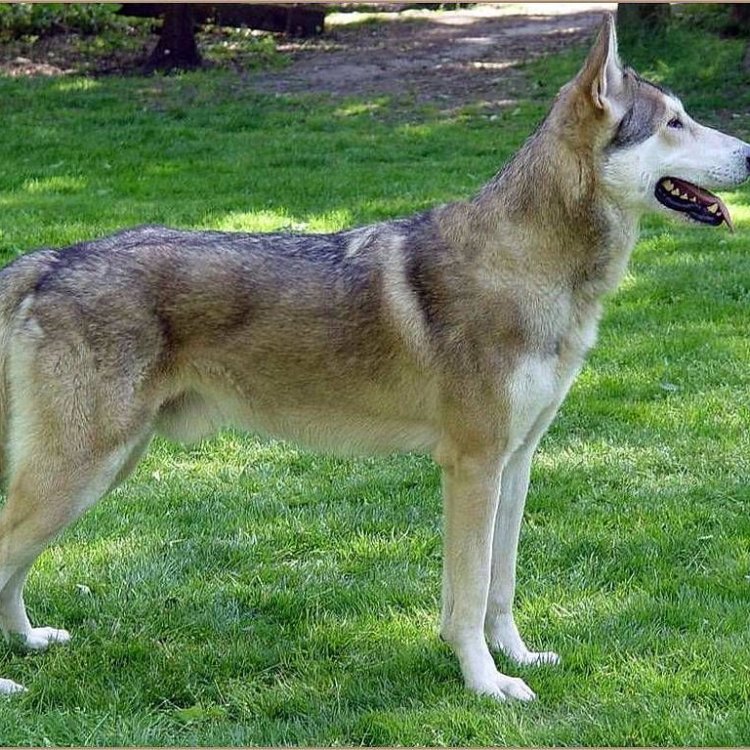
The Saarloos Wolfdog: A Hybrid of Nature and Domestication
Disclaimer: The content provided is for informational purposes only. We cannot guarantee the accuracy of the information on this page 100%. All information provided here may change without prior notice.





